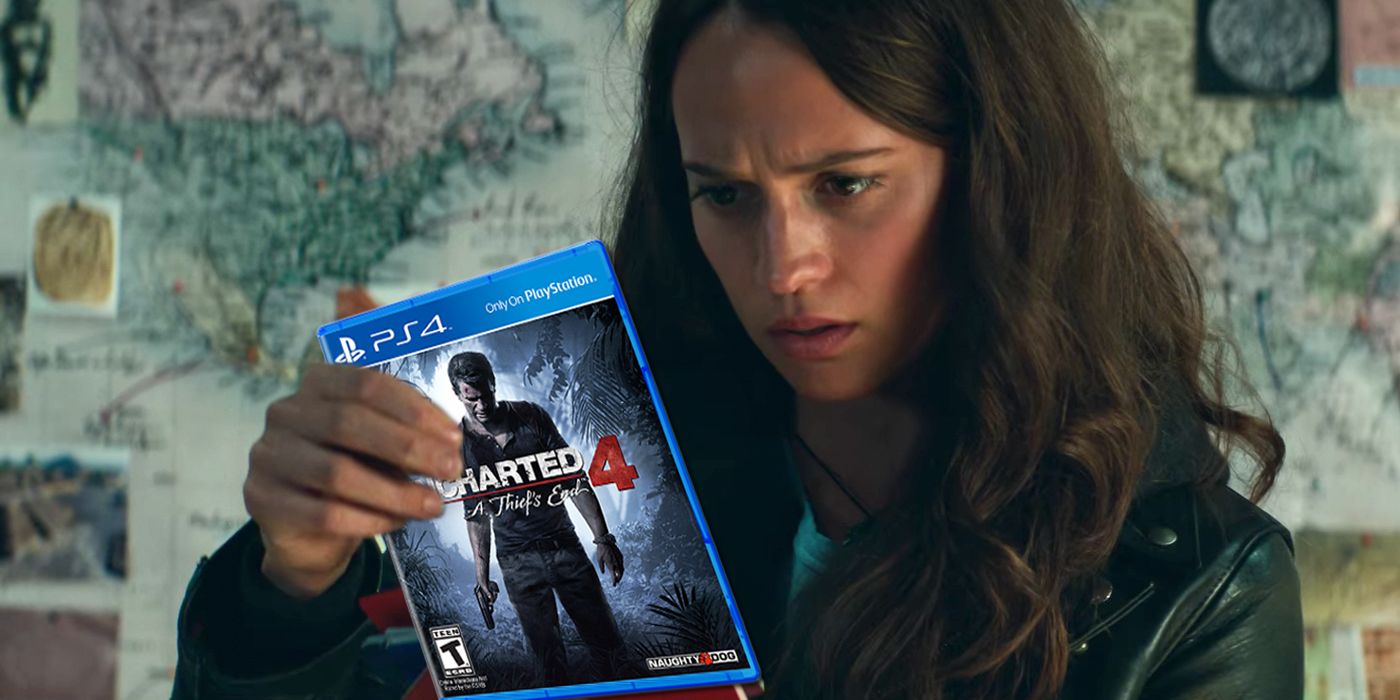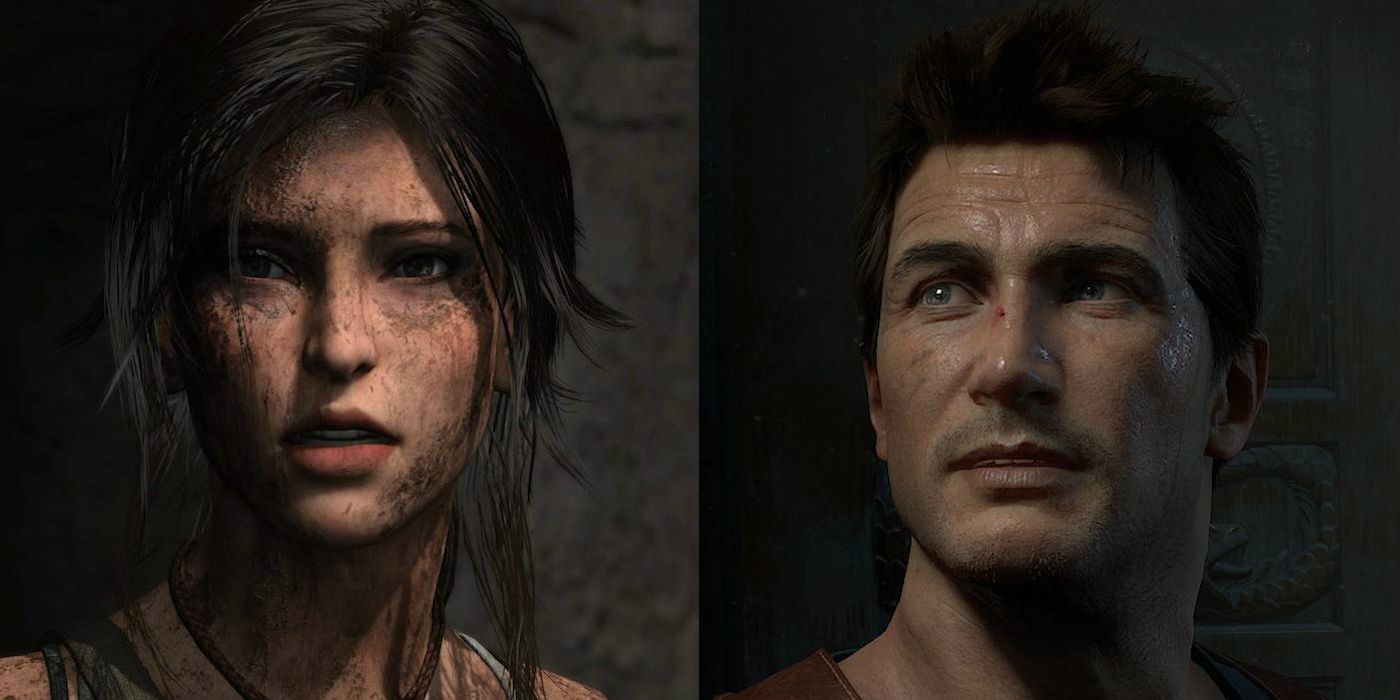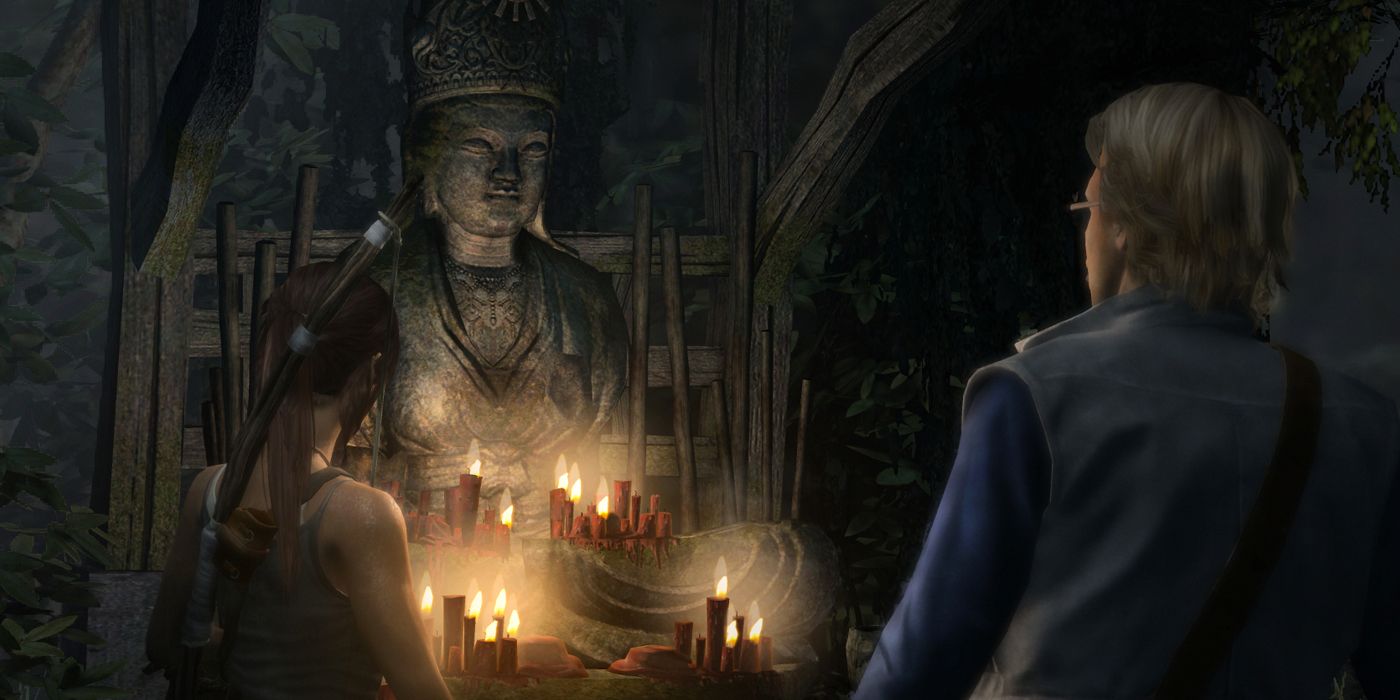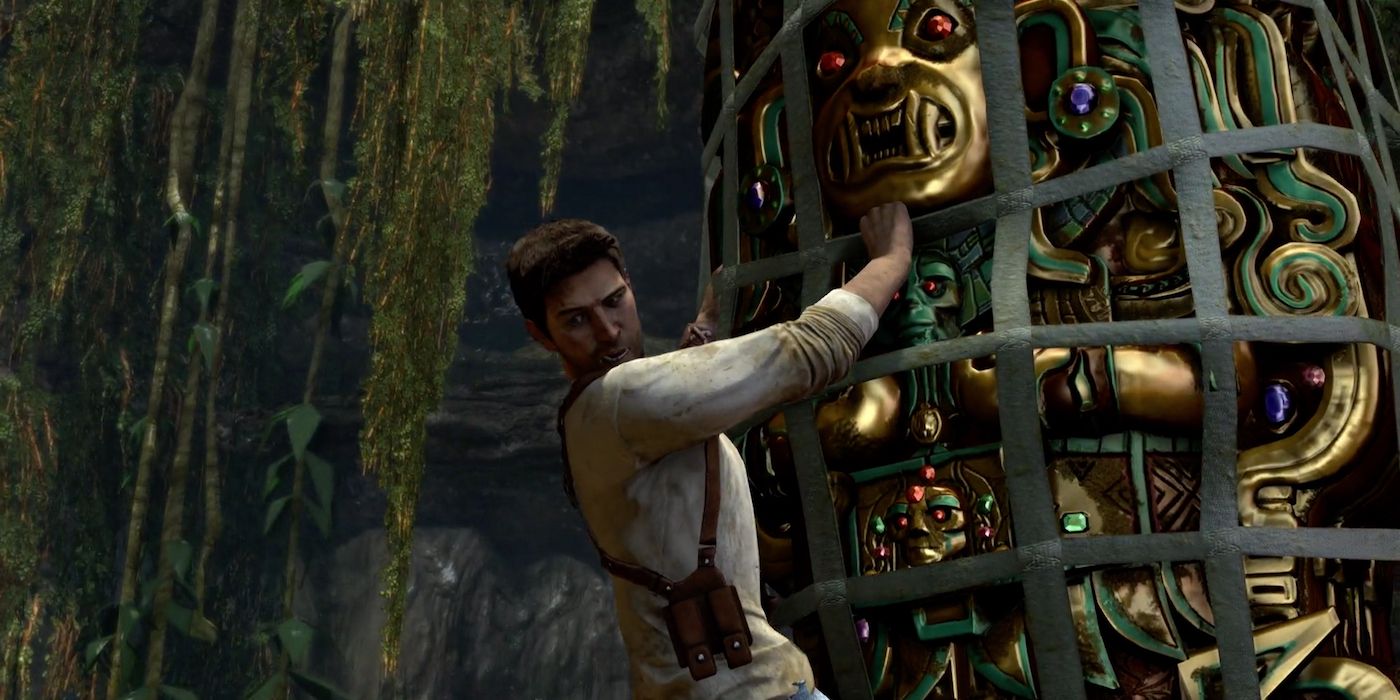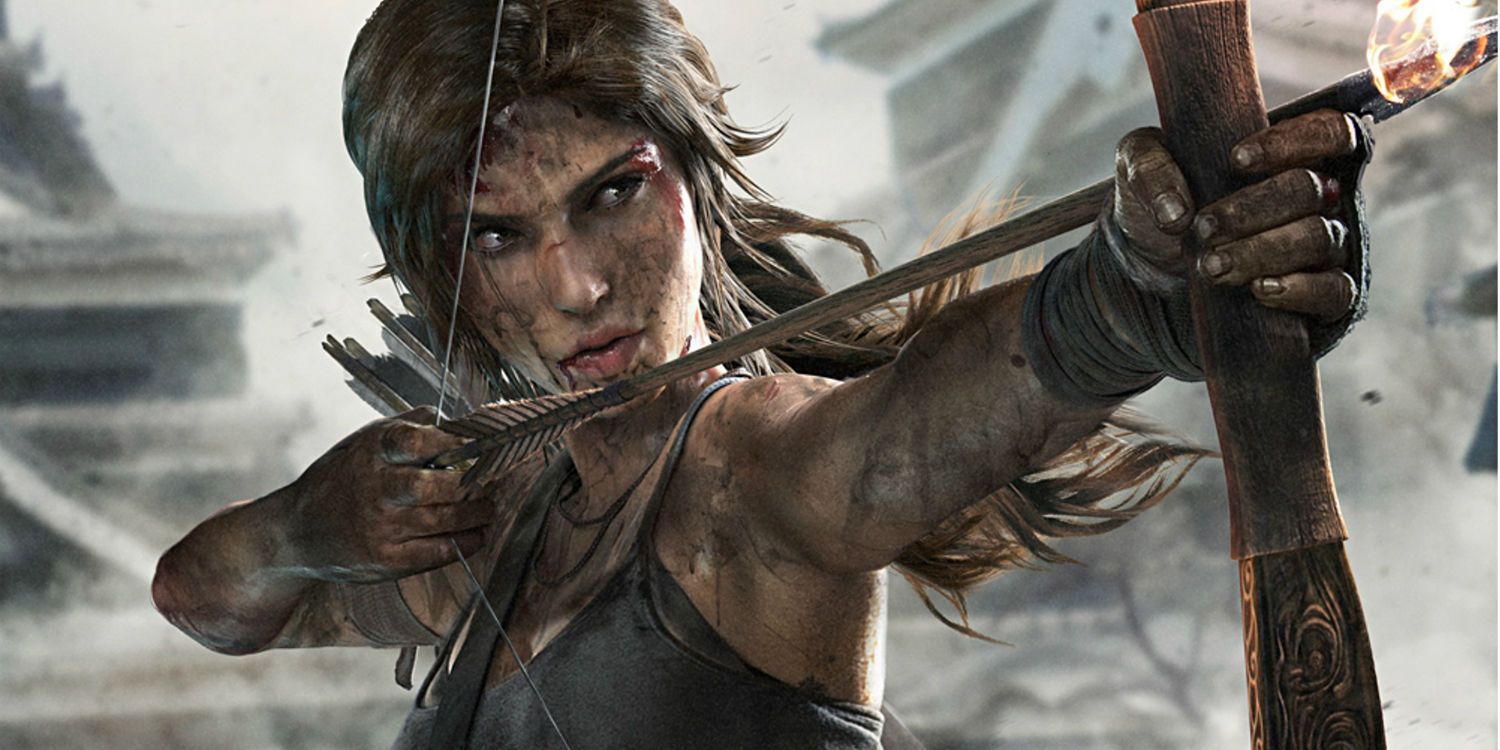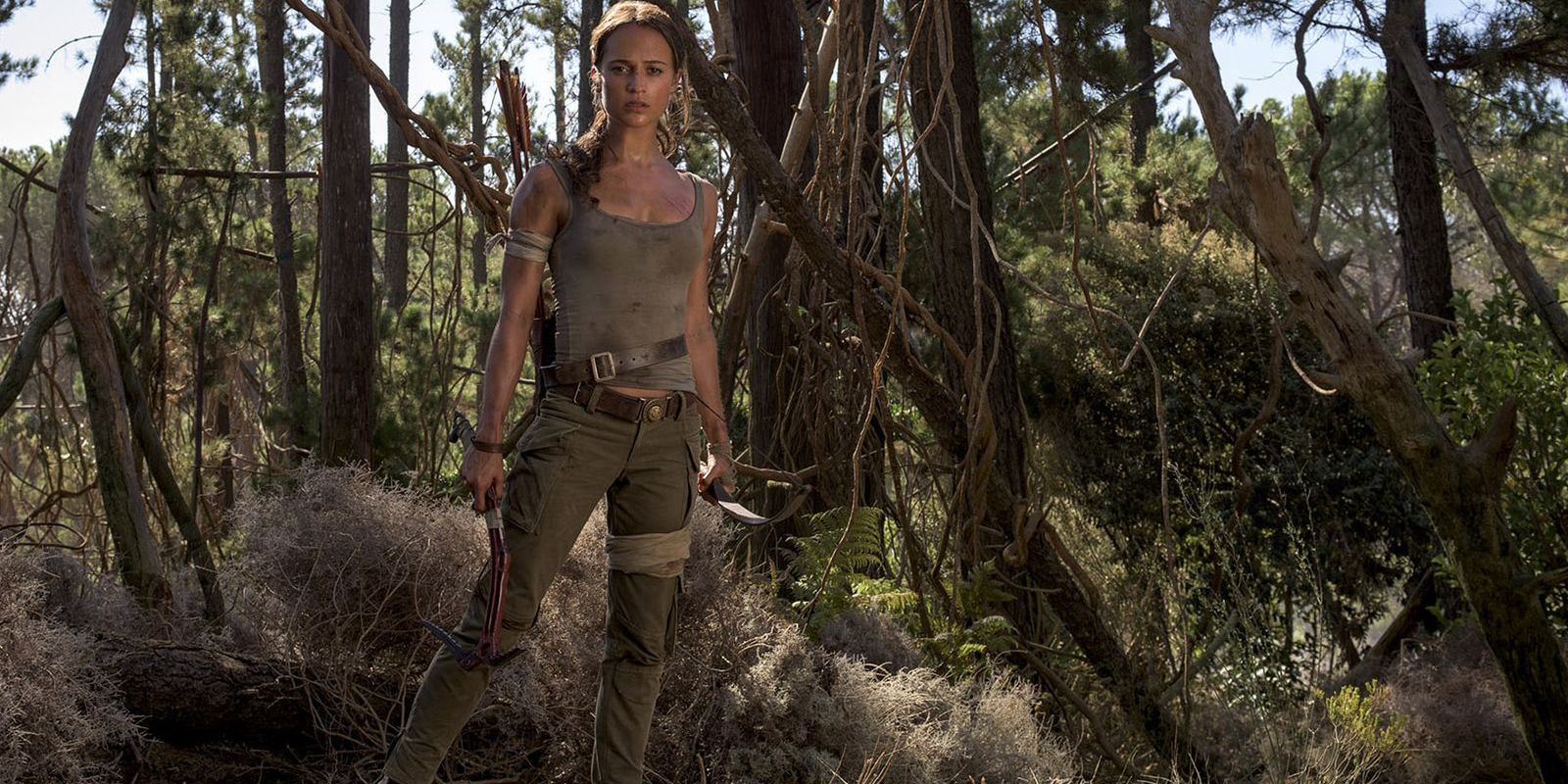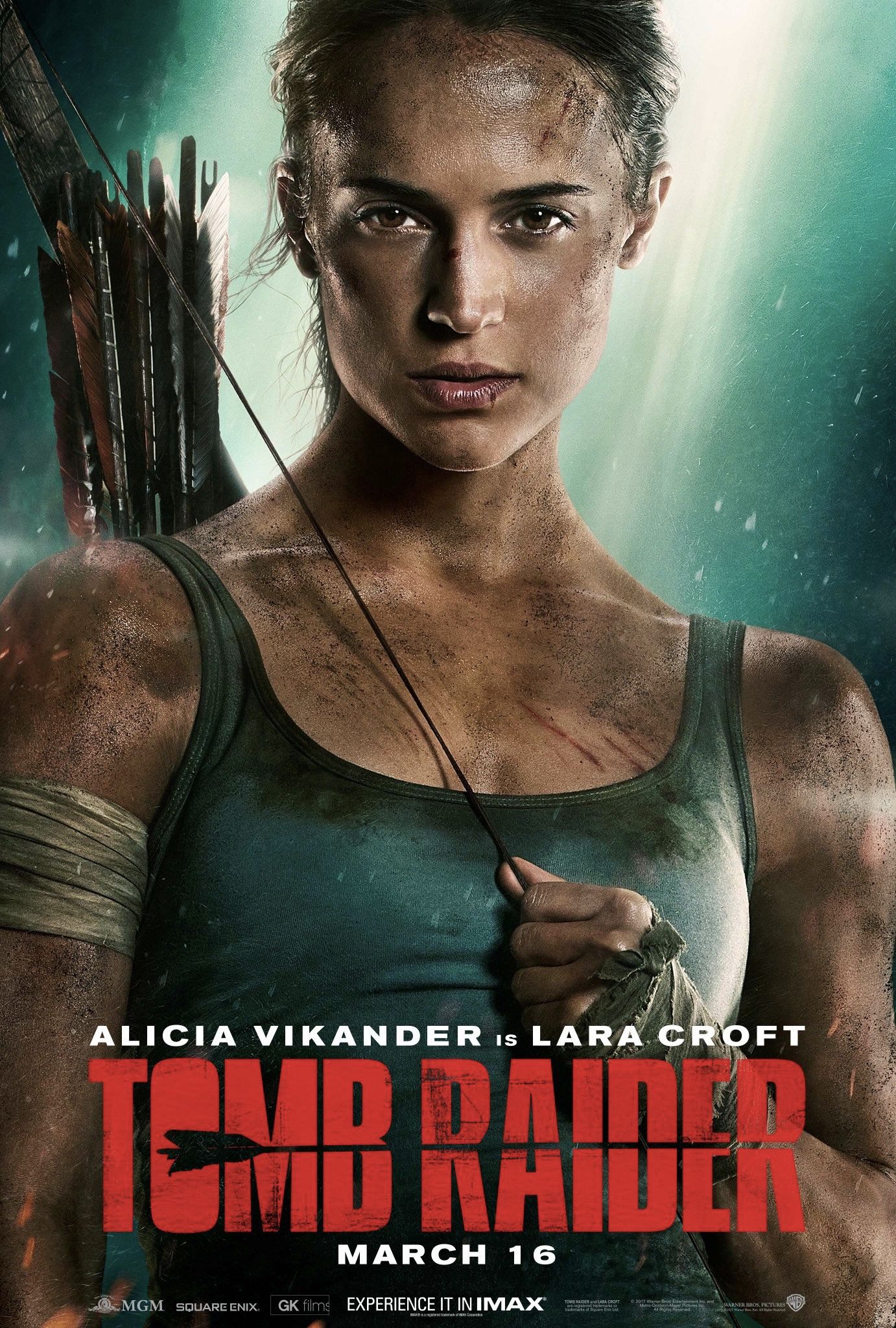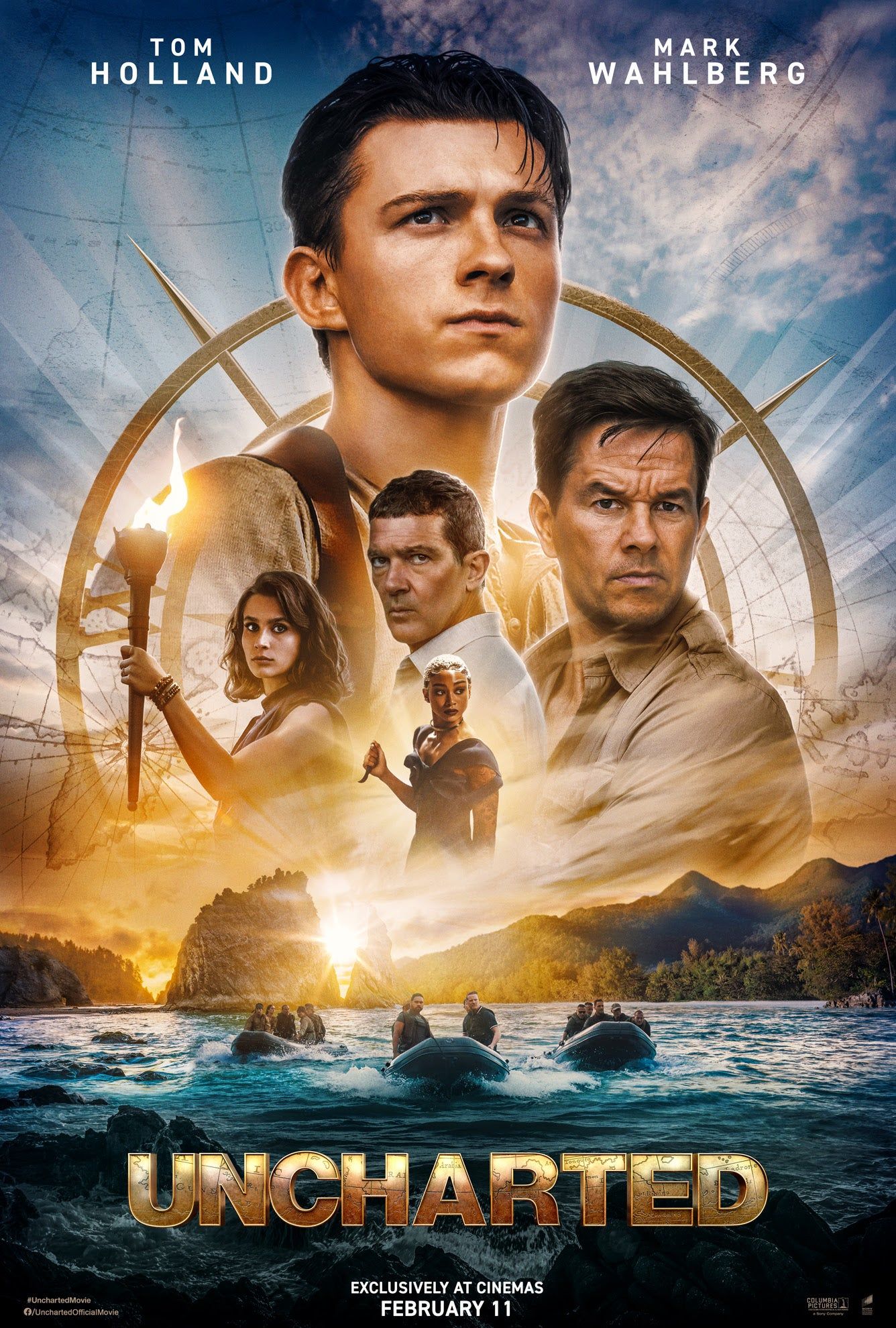Warning: Spoilers for Tomb Raider (2018).
Lara Croft and Nathan Drake may be more connected than you thought: did Tomb Raider steal its twist ending from rival game franchise Uncharted?
The long-awaited reboot to the film series (based on the 2013 reboot of the game series), is finally hitting theaters, and the movie is receiving praise for being a solid adaptation of the video game and a strong action flick on its own merits. Thanks to some strong acting and creative action sequences, Tomb Raider is the best game-to-film adaptation in... well, in a long time. The movie is essentially Lara Croft's origin story, seeing the skilled-but-cash-strapped hero on a dark, brutal formative adventure on Yamatai a mysterious, hidden island that holds the tomb of Queen Himiko - one which uncovering will surely release a dark curse.
Related: Tomb Raider Review: Alicia Vikander Almost Breaks the Video Game Curse
It's very much inspired by the game, although there is one curious issue with the adaptation, however. It's not exactly a problem, but it is a bizarre oddity which will come as a huge shock to fans of the game... and its competitor, Uncharted.
This Page: Tomb Raider's Villain Twist Is Straight Out Of Uncharted
The Rivalry Between Tomb Raider and Uncharted
Casual moviegoers may not be too familiar with Uncharted, but they will be the video game is currently being adapted by Sony Pictures as a big-budget blockbuster starring Tom Holland as a teenage version of Nathan Drake, a globe-trotting adventurer with a knack for finding lost treasures and ancient cities. Sound familiar? Tomb Raider debuted in 1996, introducing the world to Lara Croft, a globe-trotting adventurer with a knack for finding lost treasures and ancient cities. Obviously, both Tomb Raider and Uncharted owe a significant debt to Indiana Jones, but in the video game space, Lara Croft was the reigning queen of adventure. Until 2007, that is.
When Uncharted first debuted as one of the first big exclusives for Sony's PlayStation 3 system, audiences immediately pointed out its perceived similarity to Tomb Raider, even derisively calling it "Dude Raider". Upon release, Uncharted became a huge hit, although comparisons between Lara Croft and Nathan Drake remained. In 2009, Uncharted 2: Among Thieves saw blockbuster success (it was heralded as one of the greatest games ever made), while 2008's Tomb Raider: Underworld received middling reviews and failed to meet sales expectations.
By the time the 2013 Tomb Raider reboot came around, the game was actually accused of ripping off Uncharted, a complete reversal of the situation only a few years earlier. The rivalry between the two franchises was reignited when the video game, Rise of the Tomb Raider, launched as a Microsoft Xbox exclusive in November 2015. This was only six months before Uncharted 4: A Thief's End, which released on PlayStation the following May (Rise eventually came out on Sony's console in October 2016).
Tomb Raider's Villain Himiko Changed For The Movie
Tomb Raider 2013 deals with Queen Himiko of Yamatai, a Japanese queen loosely based on a real-life historical figure - although the real Queen Himiko probably couldn't control storms or transfer her essence across bodies, essentially having the power of eternal life. In the game, Himiko was a priestess endowed with knowledge of some form of dark witchcraft. She could control the weather, creating grand lightning storms through sheer willpower, and cursing her bodyguards into becoming powerful undead samurai. When Lara finally killed the undead queen (by setting her on fire), the curse was lifted and the storms around Yamatai faded away.
Related: Tomb Raider Makes One Irreversible Change to Lara Croft's Story
Queen Himiko returns in the movie, but her power is very different from the game. In the film, Himiko is not undead: she is simply dead. Upon opening her sealed coffin, the grave robbers are greeted by the beautiful visage of a peacefully sleeping woman who then decays before their eyes, the sudden exposure to air ravaging her preserved body. The audience is surely expecting her to come back to life as some type of demonic zombie, especially when her torso springs up at a 90-degree angle, but it's just a ruse, smoke and mirrors, presumably to scare away thieves like Walton Goggins' Matthias and Lara.
However, that doesn't mean she isn't dangerous. When attempting to move her body, one of Matthias's men touches her and is nigh-instantaneously afflicted with some type of plague. It spreads across his hand and then his entire being, corrupting him with some sort of crazed madness, essentially turning him into what can easily be described as a savage zombie. All it takes is one touch.
To be clear, this element was not present in the original game. At least, not in a Tomb Raider game.
El Dorado in Uncharted: Drake's Fortune
If the film's version of Himiko and her cursed power sounds familiar, then it's because it's exactly like El Dorado, as seen in 2007's Uncharted: Drake's Fortune. That game introduced video game players to Nathan Drake, Victor Sullivan, and Elena Fisher as they searched for El Dorado, a mythical lost city of gold. When they find it, they discover that it's not actually a city, but a solid gold statue. Except it's not a statue it's a sarcophagus, containing an ancient evil.
Related: Alicia Vikander Makes A Better Lara Croft Than Angelina Jolie
While villain Gabriel Roman is impressed with the beautiful gold statue, his lieutenant, Atoq Navarro, convinces him to open the sealed casket, insisting that the "true" treasure of El Dorado is within. Upon opening the sarcophagus, Roman discovers a long-dead and decayed body, which releases or possibly even breathes some type of poisonous or viral spores. Mere seconds after breathing in the toxic substance, Roman is corrupted by the mysterious plague, which transforms him into a mindless, crazed zombie. He begins charging at Navarro with a terrible bloodlust, but is put down with a single headshot from the pistol of his former subordinate.
Why Did Tomb Raider Change Himiko?
The similarities are striking. In both Tomb Raider 2018 and Uncharted: Drake's Fortune, a sealed casket keeps an ancient plague at bay. Then, a villain opens the casket and is afflicted with the plague, which takes effect almost immediately. The plague causes the victim to be driven mad with rage and an impulse to attack anyone within range. Even the visual effect around their eyes is eerily similar.
It's easy to speculate as to why the Tomb Raider movie didn't want to retread the same ground as the 2013 game. It may be partly budgetary concerns. Tomb Raider carries a budget of $90 million, which is not rationally enough to feature sequences of extreme weather phenomena to showcase Himiko's powers, to say nothing of her undead army of Oni. Keeping the CGI spectacle at a relative minimum was a smart choice in terms of maintaining the focus on the character of Lara Croft, as well as keeping expenses reasonable. It also grounds the adventure more: fantasy is an easier card to play in the game without breaking the realism due to the player's connection, whereas a centuries-old spirit would be out of place in the reboot. It's also an unexpected twist for fans of the game.
But how do you get from there to an idea from another game? And not just any other game, but Uncharted, Tomb Raider's closest competitor. It might be impossible to know for sure if Tomb Raider actively cribbed a key plot point from Uncharted or if the screenwriters came up with the idea and simply didn't know about El Dorado, but it honestly feels way too similar to just be a coincidence.
Does The Himoko Change Work?
This non-supernatural take on Himiko creates something of a logic leap regarding the storms on the island. In the game, Himiko used her powers to purposefully cause shipwrecks and even use lightning to swat planes out of the sky. Her witchcraft is also what leads any and all rescue or escape attempts to end in bitter failure. Only by killing Himiko for good does Lara free the island from her curse and rid it of the nasty weather conditions.
Related: There's No Such Thing As A Video Game Movie œCurse
In the movie, it's simply bad luck that Lara - and the legions before her - get shipwrecked on Yamatai. The Devil's Sea, also known as the Dragon's Triangle, is a dangerous spot of ocean in real life, and it gets the best of Lu Ren's ill-prepared rust bucket of a boat. It's not truly a plot hole, since there are no thwarted rescue attempts, and the backstory of Matthias and the island's other inhabitants are changed to compensate for this story alteration, but it is a noteworthy difference from the source material which fails to subvert the old "shipwrecked on a mysterious island" cliché and just plays the classic trope completely straight.
-
Tomb Raider is a solid action movie bolstered by great acting and a noticeable respect for the legendary brand, but for many video game fans, the unexpected twist about Himiko's powers will go down in history as yet another shot between the TR and Uncharted, whether it was intentional or not.
Uncharted was accused of ripping off Tomb Raider. In response, 2014's Lara Croft and the Temple of Osiris included, as an Easter Egg, a dead body conspicuously resembling Nathan Drake. Now that the Warner Bros. Tomb Raider movie can be accused of ripping off Uncharted, will Sony's upcoming adaptation of the game feature any reciprocal mud-slinging towards Lara Croft? Or will Sony and WB manage to play nice? Whatever happens, the prospect of both Uncharted and Tomb Raider experiencing simultaneous success in the realms of movies and video games is something every action/adventure fan should be happy about.
Next: Is Tomb Raider Too Violent For A PG-13?

